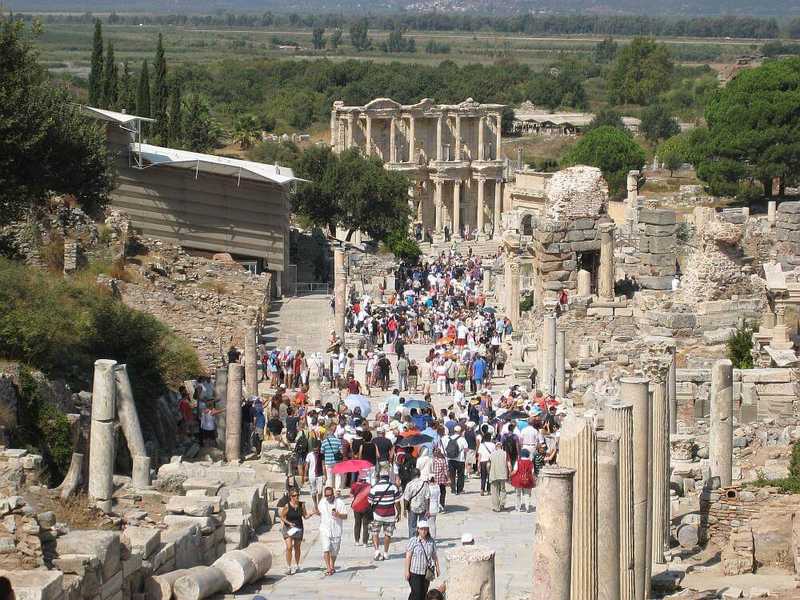The broad marble-paved road leading down a gentle slope from the Monument of Memmius to the Library of Celsus is called the Street of the Curetes.
Measuring 210 mtres long and between 7-10 metres wide, the street traveses the valley between the city's two mountains. Sevage pipes ran underneath. In the Early Roman Period, the street was bordered by colonnaded galleries (porticos) and walkways, with come parts of the porticos housing artisan shops. Pedestals were placed in front of every column of the colonnade and these were mounted with bronze and marble statues; most of the statues depicted figures of didtingushed public merit.
In the first week of every May, priests known as Curetes (their names are inscribed on the columns of the Prytaneion) would process along the street from the lower slopes of Mt Bülbül to Ortygia. Ortygia, which lies around 7 kilometres away on the Kuşadası road, was the mythical birthlace of the goddess Artemis. Having arrived in Ortygia, the priests would perform a ritual re-enachment of the birth of Artemis.
The two sides of the street were lined with fountains, extraagant houses, baths, halls, shops and honorary monuments. In the fifth century AD, a narrow gate adorned with two reliefs Hercules, the Street of the Curetes widens out and begins a gentle decline. On this section of the street you will find the Fountain of Trajan, the Stoa of Alytarches, the Baths of Varius, the Latrina (public lavatories), the Temple of Hadrian, the 'Terrace Houses', the Monument of Androclus, the Octagon and the Gate of Hadrian. At the very end of the streeet, which marks the beginning of the Marble Way, is the magnificent Library of Celsius.

